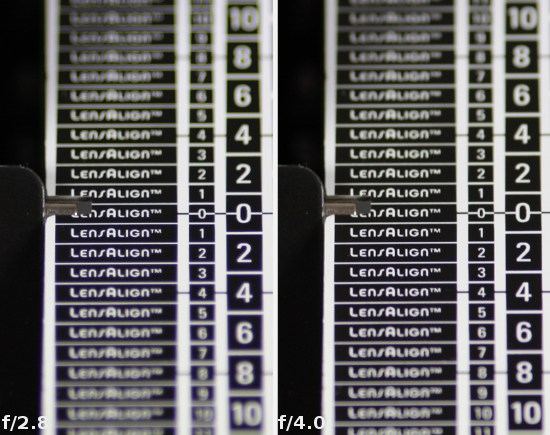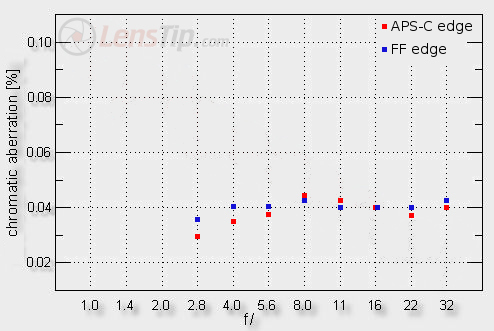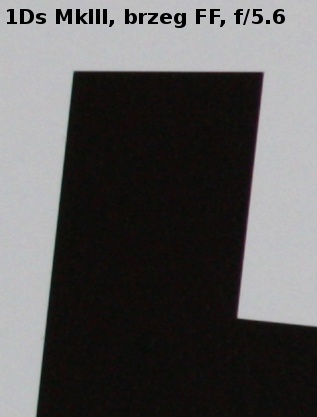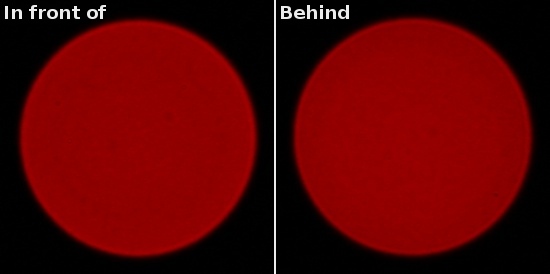Canon EF 200 mm f/2.8L II USM
5. Chromatic and spherical aberration
 |
The situation of lateral chromatic aberration, which is negligible on the edge of the APS-C sensor and full frame alike. The level of 0.04% is not anything you should worry about.
Please Support UsIf you enjoy our reviews and articles, and you want us to continue our work please, support our website by donating through PayPal. The funds are going to be used for paying our editorial team, renting servers, and equipping our testing studio; only that way we will be able to continue providing you interesting content for free. |
- - - - - - - - - - - - - - - - - - - - - - - - - - - - - - - - - - - - - - - - - - - - - - - -

 |
We would like to introduce in this chapter an evaluation of another axis aberration - the spherical one. You can assess it by looking at out-of-focus image of a light point. When the aberration is corrected in a perfect way the layout of light inside the circle should be even, no matter whether you get an out-of-focus image in front of or behind the focal point. If the aberration is overcorrected or undercorrected the image on one side of the focus will have a light rim around the edge and on the other side it will be lighter inside and darker on the edge.
Let’s check how the Canon EF 200 mm f/2.8L USM II fares in this category.

As you see both images are very much alike although some very slight differences can be still noticed. In both cases there is a lighter rim on the edge which intensity is a bit higher in the case of front focus image. The front focus image also has much more homogeneous surface in the centre whereas the back focus image shows the centre a tad lighter than the rim. You can assume that the spherical aberration is corrected very well but not in a perfect way.






